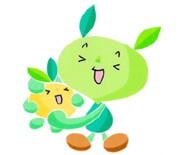The Microscopic World
What do you think about the color of water? It looks transparent in a glass, but it looks blue in the ocean, lakes or the rivers. But sometimes, the water surface looks red or covered with green membrane. Why? These phenomena are mostly caused by massive growth of plankton. The color of water could be different due to the pigments of causal plankton. Why does the massive growth of plankton occur? What is happening in the microscopic world?
At midsummer, water-based recreation is popular. Prof. Shin-ichi Nakano who has conducted research on aquatic ecology answered our questions.
- Questions answered by: Shin-ichi Nakano
- Director and Professor, Center for Ecological Research, Kyoto University
Q1
Why does the surface water of the oceans, lakes or ponds look red or covered with green membrane?

A
The surface water of oceans, lakes or ponds appears in various colors. The phenomenon where the color of sea water looks red is called ‘red tide’ and this is mostly caused by Noctiluca (dinoflagellates), a kind of plankton. In lakes, this phenomenon is called ‘freshwater red tide.’ Freshwater red tide is caused by Uroglena (golden algae, chrysophytes) growing in Lake Biwa, or by Peridinium (Dinophyceae) in reservoirs. The phenomenon where surface water looks covered with green membrane is called ‘cyanobacterial bloom.’ Cyanobacterial bloom is a massive growth of Cyanobacteria, a kind of photosynthesizing phytoplankton. Microbes such as Microcystis and Anabaena are representative phytoplankton that cause cyanobacterial blooms.
Aside from ‘red tide’ or ‘cyanobacterial bloom,’ the color of surface water is also influenced by other factors. Water surfaces of swamps or ponds sometimes look like a red carpet. This is a bloom of azolla (Azolla imbricata), a kind of floating weed. Also in early May, a phenomenon where the surfaces of rice paddies are filled with water that appears to be covered with green membrane is sometimes observed. This is a massive growth of Euglena (a kind of phytoplankton belong to Euglenophyceae), and is now famous as a healthy food.
Q2
How are these phenomena such as red tide, freshwater red tide or cyanobacterial bloom caused?

A
When nitrogen and phosphorus rich water (effluents from household, agriculture, industry, etc.) flows into the oceans or lakes due to various reasons, ‘food’ for phytoplankton becomes abundant, and a lot of phytoplankton grow massively. This massive growth of phytoplankton is called ‘eutrophication.’ Red tide, freshwater red tide and Cyanobacterial bloom are a group of phytoplankton. In other words, they are living things – so they greatly increase in population under the condition of eutrophication when their food (nitrogen and phosphorus) is rich in the water.
Eutrophication can be caused naturally as well, but it is considered that human activities enhance eutrophication in oceans or lakes as human oriented effluents are often rich in nutrients like nitrogen and phosphorus.
Eutrophication provides ‘food’ for all plankton. But actually, only phytoplankton causal to red tide, freshwater red tide and cyanobacterial bloom become dominant under the condition of eutrophication. The reasons why this dominance occurs have not been elucidated yet.
Cyanobacterial bloom at Lake Victoria , Kenya(Photo: Shin-chi Nakano)
Microscopic picture (Photo: Hiroyuki Imai)
Q3
What is the influence on water quality of the phytoplankton causal to red tide, freshwater red tide and cyanobacterial bloom?

A
Some phytoplankton causal to red tide in oceans have toxins. Also, some phytoplankton causal to freshwater red tide have a nasty odor.
When cyanobacterial bloom is observed, the waterfront landscape becomes bad, and a strong odor is released from rotten cyanobacterial bloom. Furthermore, some cyanobacterial bloom produces strong toxins. This toxin is also harmful to humans.
We use water at some lakes, reservoirs and ponds as drinking water. In Japan, such water is appropriately treated at water treatment plants in order to avoid harm in our lives.
Q4
How many kinds of plankton are there in the world? What are their roles in ecosystems? Is it necessary for nature to have variety of plankton?

A
It is said that there are more than 150,000 species of plankton in the ocean. In freshwater, Lake Biwa for example, it is said that there are more than 500 species of plankton. Plankton have an important role in aquatic food web. Phytoplankton photosynthesize to produce oxygen and organic matters, and are eaten by zooplankton. Zooplankton are eaten by fish. Dead bodies of living things are degraded by microbes (a kind of plankton) such as bacteria and protozoa (e.g. Paramecium). Also, human beings are always connected to aquatic food web through drinking water and eating fish.
For nature, it is very important that diverse living things live in harmony together. For example, if we plant only one kind of crop in the field, it may be all eaten by bugs. But if various plants are growing in the field, the field will not be badly damaged if one or two species of crops are all eaten by bugs. It is the same in water. If some species of plankton die massively due to environmental changes, some surviving plankton could increase again in water where diverse plankton are alive together. Aquatic ecosystems can manage the balance in this way.
Thank you very much, Prof. Nakano.










